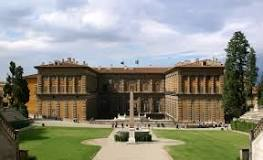The Perfect Blend

Mary Davidek
The Perfect Wine Blend: Blending Grapes & Varietals
We are getting ready for a wedding in our family, my step-daughter is getting married in September. Last week my husband and I had a pre-nuptial trip to Boise, Idaho for talks of wedding plans. This was all to be considered and discussed at a dinner which included my husband’s first wife along with the future parents-in- law, yikes! Decisions had to be made on apparel, cakes, invitations, shoes, music, relatives and ever-growing extended families. The evening was an interesting and diverse mix of people with varied relationships and ages spanning from 25 to 65. There were enough backgrounds and life events to fill a night’s conversations with entertaining and thought-provoking stories. No topic was out of bounds or taboo as we covered everything from the best way to ripen avocados to current affairs to wedding invitations. It was a great evening of fun, laughter and growth. As we were tidying up my step-daughter said to me, “wow, tonight was certainly an interesting blend”.
Which, of course, made me think about wine. Totally understandable as the evening had consisted of at least 4 different bottles of vino and they were– blends. While some varietals like Pinot Noir or Chardonnay are best as a single varietal because blending can overwhelm the unique characteristics of thin-skinned grapes, many varietals suffer from this imposed solitary confinement. Wine blends often deliver increased complexity and are more interesting than single varietal wines. In fact, some of the world’s greatest wines are made from a blend of grapes rather than a single varietal.

Some of the most prestigious wines in the world are blends. Bordeaux wines from the left bank of the Gironde River in France are typically blends of Cabernet Sauvignon with Merlot and Cabernet Franc. When blending Bordeaux varietals in the U.S. they are known as Meritage blends.The pronunciation is often subject of debate but the correct usage rhymes with heritage.

Sassicaia is approximately 15% Cabernet Franc blended with Cabernet Sauvignon to create one of the most sought after and priciest Super Tuscan wines made.
Robert Parker of Wine Advocate described Castello di Amorosa ‘s Super Tuscan blend, La Castellana as “Full-bodied, lush and seductive”. La Castellana marries Sangiovese and Merlot with Cabernet Sauvignon to create this blended masterpiece.
Blending grapes gives the advantage and potential of adding complexity to the resulting wine blend and provides a tapestry of multiple flavors and aromatics. It also offers an opportunity to achieve balance– the happy ‘marriage’ of fruit, acid, tannin, alcohol, and oak that makes great wines sing in perfect harmonic splendor and not-so-great wines seem full of wrong notes and missed opportunities.
People and grapes, we’re not so different.
Artistic Super Tuscans

Mary Davidek
Artistic Super Tuscans
You may suspect a read detailing the work of Leonardo da Vinci, Michelangelo or Botticelli as Tuscany is known for its artistic contributions. Florence, the heart of Tuscany, is considered to be the birthplace of the Renaissance and is one of the most important cities in the world for art lovers and historians. Tuscany boasts some of the world’s most prized works of art in the numerous museums and art galleries, the Uffizzi, the Pitti Palace, and the Bargello, just to name a few.


The Uffizzi Gallery (left) and the Palazzo Pitti (right) are home to some of Tuscany’s most valuable works of art.
Aside from its artistic legacy, the cultivation and appreciation of wine is also deeply steeped in the history of Tuscany. Italy is one of the oldest wine-producing regions of the world and is still the largest wine producer by volume. There are over 350 different wine grapes commonly cultivated in Italy and many of these are indigenous to Tuscany. In Tuscany you can find everything from unpretentious local village wines to more sought after and prestigious wines like Brunello de Montalcino, Chianti Classico or Super Tuscans.
The ‘super’ heroes of Italian wine
In the early 1980’s prominent Tuscan wine producers believed the legal rules of the DoC and DoCG (Italian wine law) governing the production of Chianti were too restrictive. For example, they required the use of some white grapes and they prohibited blending non-indigenous grapes i.e. Cabernet Sauvignon, Merlot or Syrah. In an effort to produce the best wines and embrace artistry in their craft they continued to use these less traditional grape varietals. Although not legally defined or regulated, the term “Super Tuscan” was coined to distinguish these artistically expressive wines from the inexpensive, lower quality wines that were typically associated with the term vino da tavola, or ‘table wine’.
Today, super Tuscans use the legal labeling of IGT (Indicazione Geografica Tipica), which gives producers more flexibility, or artistic license, and certainly has more cachet than vino da tavola. Super Tuscans now represent some of the most luxurious wines of Italy and tend to be modern, big and rich—and often carry a price tag exceeding $100- $200 a bottle.
Some super Tuscans contain Sangiovese but others are made solely from Merlot (like the famous Tenuta dell’Ornellaia Toscana Masseto), or from a blend of Cabernet Sauvignon and Syrah (Riccardo Baracchi Toscana Ardito), or from even less traditional varietals, like a combination of Petit Verdot, Cabernet Sauvignon, Syrah and Merlot (Argiano Toscana Solengo).

Castello di Amorosa’s 2009 La Castellana is 70% Cabernet, 15% Sangiovese and 15% Merlot. Exotic dried plum and tinder box on the nose and a refined palate of brooding dark cherry and dusty cocoa.
Our 2010 vintage, the first blended by Sebastiano Rosa of Italy’s famed Sassicaia has garnered a whopping 92 points from James Laube of Wine Spectator.
Sebastiano may be Castello di Amorosa’s Super-hero Tuscan!






